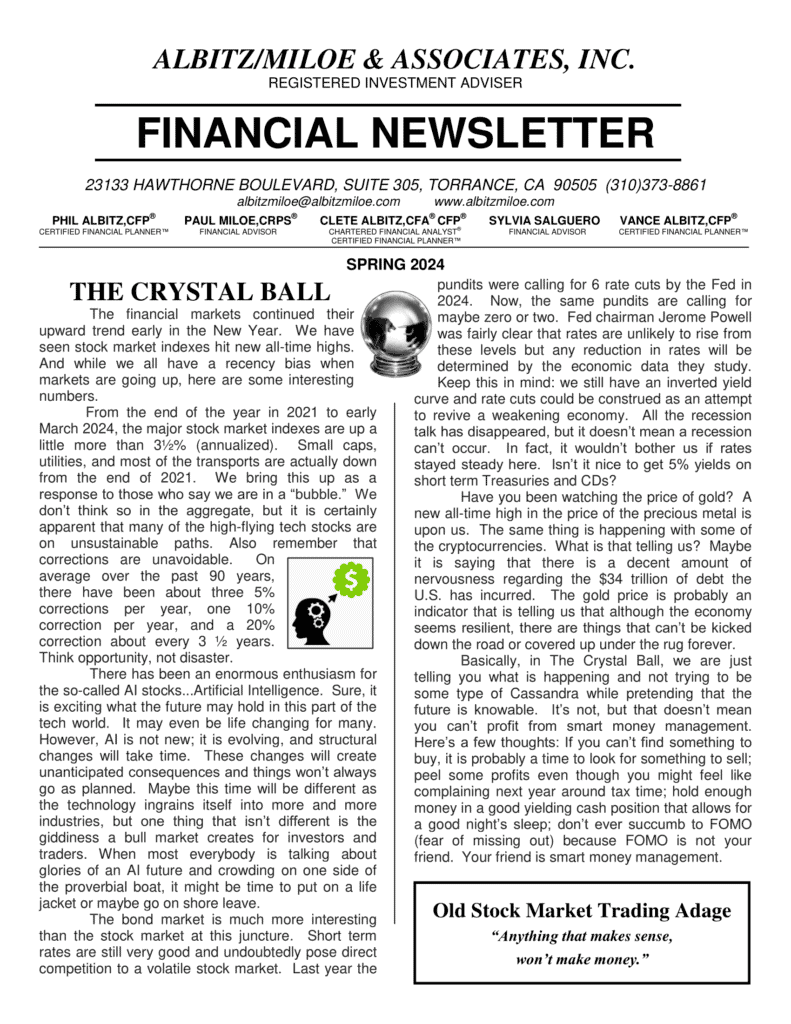The United States has not seen significant inflation in almost 40 years. That may change soon, thanks to a massive federal deficit, pent-up demand when quarantine restrictions are removed, a shift in Federal Reserve monetary policy, and an “unprecedented” (how many times have you heard that word in 2020?) amount of dollar printing to fund the governments relief efforts for Covid-19.
What is Inflation?
Inflation is the decline of purchasing power of a given currency over time. The inflation rate (reflected as a %), can be reflected by the increase of the average price level of a basket of selected goods and services in an economy over some period of time, most often the Consumer Price Index (CPI). The rise in the general level of prices means that a unit of currency effectively buys less than it did in prior periods.
Inflation can be contrasted with deflation, which occurs when the purchasing power of money increases and prices decline. Since the 2008 financial crisis, the US economy has experienced very low inflation. Remember the price of TVs, toys, and computer software in 2000? These products have become more affordable over the past two decades (of course, there are exceptions: health care, college, and housing are a few). However, the majority of goods and services have not seen large increases in price since the turn of the century.
Inflation vs. Hyperinflation
A moderate level of inflation occurs naturally in a growing economy. The Federal Reserve has historically targeted a 2% inflation growth rate each year.
Hyperinflation, which is usually defined as inflation above 50%, is destructive to an economy. In recent years, hyperinflation has destroyed the economies of Zimbabwe, Venezuela and Argentina. The nature of the inflation being discussed for the US in 2021 is 2% to 4%, nowhere near the normal definitions of hyperinflation. However, it will be important to control the inflation rate if it spirals out of control.
The Advantages of Inflation
- Moderate inflation enables adjustment of wages. It is argued a moderate rate of inflation makes it easier to adjust relative wages. For example, it may be difficult to cut nominal wages (workers resent and resist a nominal wage cut). But, if average wages are rising due to moderate inflation, it is easier to increase the wages of productive workers; unproductive workers can have their wages frozen – which is effectively a real wage cut. If we had zero inflation, we could end up with more real wage unemployment, with firms unable to cut wages to attract workers.
- Inflation can boost growth. At times of very low inflation, the economy may be stuck in a recession. Arguably targeting a higher rate of inflation can enable a boost in economic growth. This view is controversial. Not all economists would support targeting a higher inflation rate. However, some would target higher inflation, if the economy was stuck in a prolonged period of slow or no growth.
- Inflation is better than deflation. A fall in prices can cause an increase in the real debt burden and discourage spending and investment. Deflation was a factor in the Great Depression of the 1930s.
The Disadvantages of Inflation
The higher the inflation, the more serious the problem is. In extreme circumstances, hyperinflation can wipe away people’s savings and cause great instability, e.g. Germany 1920s, Hungary 1940s, Zimbabwe 2000s. However, in a modern economy, this kind of hyperinflation is rare. Usually, inflation is accompanied with higher interest rates, so savers do not see their savings wiped away. However, inflation can still cause problems.
- Inflationary growth tends to be unsustainable. This tends to lead to a damaging period of boom and bust economic cycles. For example, the UK saw high inflation in the late 1980s, but this economic boom was unsustainable, and when the government tried to reduce inflation, it led to the recession of 1990-92.
- Inflation tends to discourage investment and long-term economic growth. This is because of the uncertainty and confusion that is more likely to occur during periods of high inflation. Low inflation is said to encourage greater stability and encourage firms to take risks and invest.
- Inflation can make an economy uncompetitive. For example, a relatively higher rate of inflation in the U.S. can make U.S. exports uncompetitive, leading to lower economic growth.
- Reduce the value of savings. Inflation leads to a fall in the value of money. This makes savers worse off – if inflation is higher than interest rates. High inflation can lead to a redistribution of income in society. Often it is pensioners who lose out most from inflation. This is particularly a problem if inflation is high and interest rates low.
- Fall in real wages. In some circumstances, high inflation can lead to a fall in real wages. If inflation is higher than nominal wages, then real incomes fall. This was a problem in the great recession of 2008-09, with prices rising faster than incomes.
Inflation is usually considered to be a problem when the inflation rate rises above 2%. Let’s see how beneficial inflation is in 2021.





